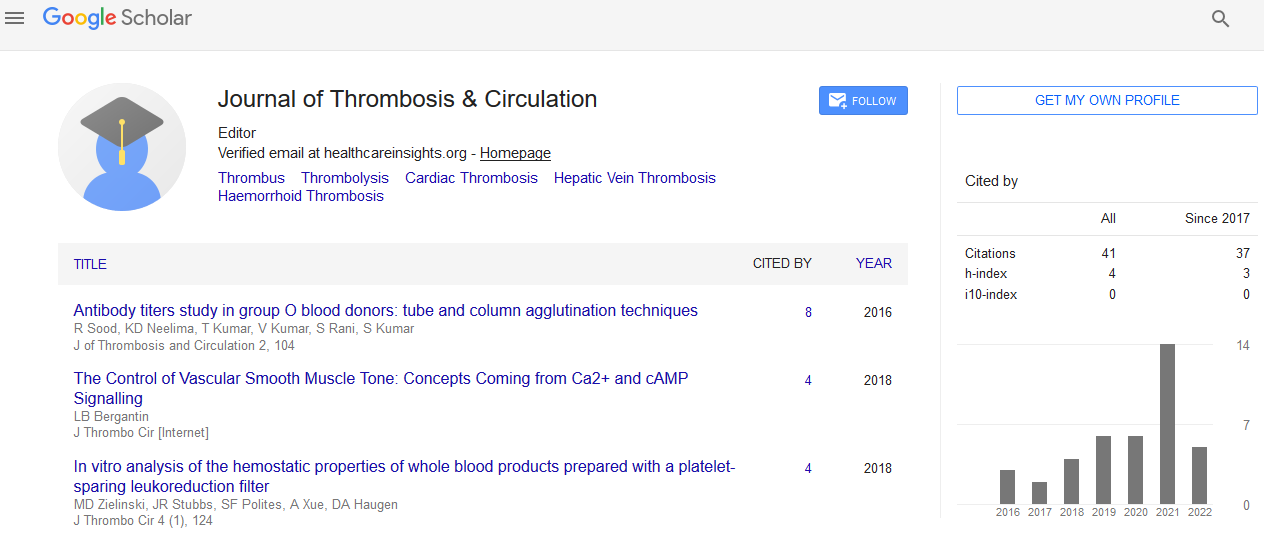Indexed In
- RefSeek
- Hamdard University
- EBSCO A-Z
- Publons
- Google Scholar
Useful Links
Share This Page
Journal Flyer

Open Access Journals
- Agri and Aquaculture
- Biochemistry
- Bioinformatics & Systems Biology
- Business & Management
- Chemistry
- Clinical Sciences
- Engineering
- Food & Nutrition
- General Science
- Genetics & Molecular Biology
- Immunology & Microbiology
- Medical Sciences
- Neuroscience & Psychology
- Nursing & Health Care
- Pharmaceutical Sciences
Abstract
Potential Cardioprotective Effects of Orlistat for Treatment
Francisco Sandro Menezes-Rodrigues1
Acute myocardial infarction (AMI) is characterized by ischemic lesions that severely compromise cardiac structure and function, and even the survival of mammals. Нe ischemic cardiac diseases (ICD) are related to million deaths per year in the world [1,2]. Although convencional therapy is based on the cardiac reperfusion (R), this procedure increases cardiac damage caused by ischemia (I), and severe arrhythmias (e.g. ventricular arrhythmias and atrio-ventricular blockade) [2-5]. Several reports have demonstrated that cardiac arrhythmias caused by myocardial ischemia and reperfusion (I/R) could be originated from bioenergetic, and electrochemical, imbalance triggered mainly by decrease of ATP synthesis by mitochondria, and cytosolic Ca2+ overload in cardiomyocytes [2-5]. НLs Ca2+ overload is massively worsed by the increase of Ca2+ Lnflux through L-type voltage-activated Ca2+ channels (VACC) caused by continuous membrane depolarization of cardiomyocytes during cardiac I/R [2-5]. In addition, cytosolic Ca2+ overload promotes accumulated Ca2+ in the mitochondrial matrix via increase of Ca2+ Lnflux through mitochondrial uniporter, leading to mitochondrial bioenergetic collapse, and excessive production of free radical, which compromises the structure and function of mitochondria, and other cytoplasmic organelles [2-5]. Нese cellular mechanisms importantly contribute for developing arrhythmias, and death in AMI patients. Despite continuous advances in AMI treatment, a high ratio of patients dies suddenly in the early hours before arriving at the hospital [6-9]. Most of these early deaths are due to complex ventricular arrhythmias (VA) and atrio-ventricular blockade (AVB) [6-9]. Surprisingly, there is still lack of knowledge about the exact events of these early malignant arrhythmias, and their cellular and molecular mechanisms.
Published Date: 2019-11-18; Received Date: 2019-11-08

